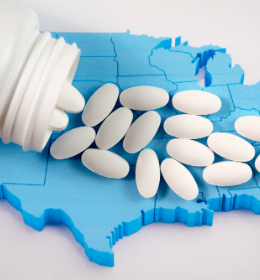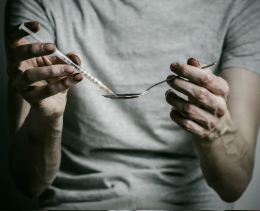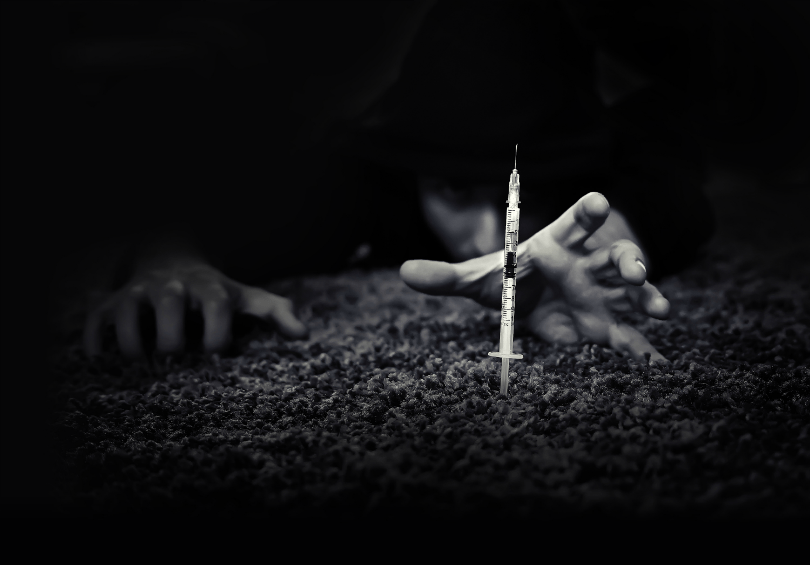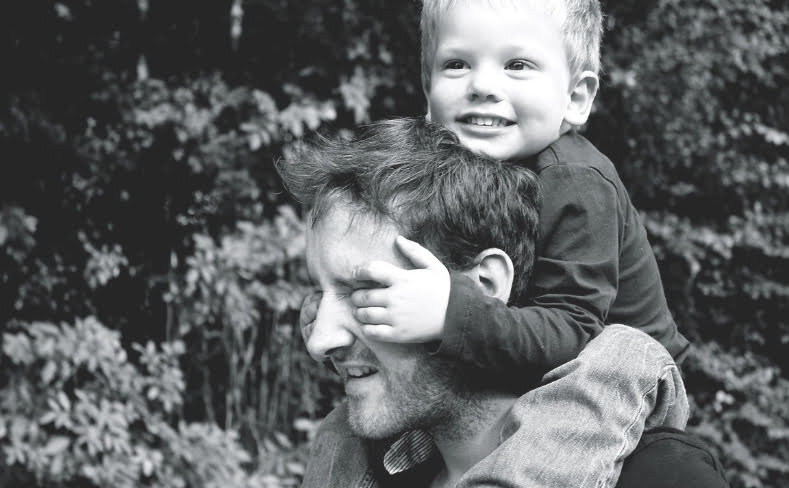Methadone Helps More Than it Hurts
 Opiate addiction affects every single aspect of a person’s life, from their career to personal relationships and everything in between, so why can’t methadone help?. I have witnessed this firsthand, just like many other grieving friends and family who have watched drugs devastate some of the people they love the most. Having seen it firsthand has led me to believe that methadone helps a lot more than it hurts.
Opiate addiction affects every single aspect of a person’s life, from their career to personal relationships and everything in between, so why can’t methadone help?. I have witnessed this firsthand, just like many other grieving friends and family who have watched drugs devastate some of the people they love the most. Having seen it firsthand has led me to believe that methadone helps a lot more than it hurts.
I have watched friends as their entire lives were derailed by their deadly habit, with drugs eventually taking over all that once mattered to them. Seeing several of my friends, all high-achievers in education and the workforce, was absolutely awful. Years of accomplishments went wasted down the drain, all in the blink of an eye, as my friends turned all their attention to drugs.
Thankfully, not all hope is lost when someone becomes addicted to drugs. I always knew how dangerous drugs could be, but I never realized or really understood how methadone can change someone’s life entirely.
Until one of my friends was addicted to opiates, and I observed how the benefits of methadone maintenance treatment worked in a major way. The methadone maintenance treatment program that has been used for many years to help recovering addicts kick their addiction to the curb.
After witnessing my friend’s remarkable recovery, I believe options such as methadone maintenance for opiate addiction is vital, especially in this day and age where drugs are killing people every single day.
How Does Methadone Maintenance Work?
 My friend went through methadone maintenance where doctors use methadone, an opioid and painkiller with less addictive qualities, to wean a person off heroin or another opiate. This way, they are still receiving some form of an opioid to satisfy their craving, but they aren’t ingesting dangerous, even deadly quantities of heroin or prescription pills.
My friend went through methadone maintenance where doctors use methadone, an opioid and painkiller with less addictive qualities, to wean a person off heroin or another opiate. This way, they are still receiving some form of an opioid to satisfy their craving, but they aren’t ingesting dangerous, even deadly quantities of heroin or prescription pills.
A qualified medical team will set up a treatment plan that includes the proper dosage of methadone and directions for each individual case. Every person is different and will respond to methadone maintenance differently, but it is important to give them the support they need to succeed.
Methadone should only be administered by certified medical staff, and as the treatment continues, the dosage will get smaller and smaller. My friend felt safe and secure with his medical staff, which I think helped him recover and stay off drugs.
Many doctors prefer methadone maintenance as it decreases the chances of a relapse and ups the possibility for rehabilitation with a successful recovery. Although some critics argue that using an opioid to treat addiction to another opioid is counterproductive and opens the doors for an even worse addiction, others believe it is one of the best ways to make the withdrawal process as comfortable as possible. I support this treatment method as a preventive measure to relapse, and I think the benefits far outweigh the potential negatives.
It is vital that no matter how strong you think you are, the truth is that you’re much more likely to relapse, or perhaps even death if you try to detox on your own. If possible, enter a detox and rehabilitation center to make it easier. Plus, doing so will also increase your chances of staying clean and sober in the long-term.
The Need for Methadone in the U.S
 It’s no secret that opioid addiction is are a major problem, not only in the United States but also across the world, with thousands of lives lost every year to the preventable yet powerful vices of illegal substances.
It’s no secret that opioid addiction is are a major problem, not only in the United States but also across the world, with thousands of lives lost every year to the preventable yet powerful vices of illegal substances.
To me, some of the most heartbreaking stories are those of devastated families, grieving the loss of their children who succumbed to opioid addiction when they had such promising futures.
Sadly, the problem is growing, with overdose deaths climbing and drug smuggling fueling violence that terrifies both big cities and small towns. U.S. President Donald Trump has gone so far as to declare the opioid epidemic a “public health crisis” in a speech from October 2017. “We are currently dealing with the worst drug crisis in American history,” Trump said, according to NPR. “It’s just been so long in the making. Addressing it will require all of our efforts. We can be the generation that ends the opioid epidemic.”
In that same address, Trump also noted how drugs wreak havoc on people’s lives, causing devastation that ruins relationships and tears families apart.
Making Methadone More Prevalent
 I believe greater public awareness can make a positive impact, as can outreach about prevention and treatment such as methadone maintenance. This is especially important as opioid addiction takes over more and more lives, with addictions to heroin and prescription pills.
I believe greater public awareness can make a positive impact, as can outreach about prevention and treatment such as methadone maintenance. This is especially important as opioid addiction takes over more and more lives, with addictions to heroin and prescription pills.
I think, now more than ever, it is essential to have honest, open discussions about the challenges of opioid addiction.
When people feel the need to hide their addiction, their lives can quickly spiral out of control, and they won’t have access to the support and resources they need. In my personal experience, I have seen how the support of caring family and friends have ultimately pushed drug addicts on a path to recovery.
Common substances include Vicodin and Oxycontin, two readily-available prescription drugs that are often administered for a variety of pain, from routine surgeries to flare-ups and sore backs. I myself have been prescribed these opioids after surgery, and I was very careful to only take them when I really needed to.
While many patients do need help managing their pain, it is extremely easy to become hooked on the painkillers. My mom is a nurse, and she has told me stories of patients abusing their medication and trying to find anywhere to get their hands on pills. Drug addiction extends far beyond impoverished communities now.
People of all ages and backgrounds are susceptible to addiction. It can be difficult to identify a person with a drug problem, but changes in appearance such as flushed skin, scratch marks, weight gain or loss, and constricted pupils may point to opiate use.
It is also important to recognize that drug users often take steps to conceal their activity and hide their addiction. That’s what happened to one of my friends. I always knew him as a happy, outgoing person, but when he became withdrawn and secretive, I knew something was up.
Once you acknowledge an addiction, whether it’s you personally or a close friend or family member, it’s important to embrace the help of medical professionals. That’s when methadone maintenance therapy can come into play, and it could help you just as it’s changed the lives of many others before you.
Brief History of Methadone
 Methadone maintenance treatment was first introduced in the 1970s, and since then, it’s been used to treat millions of patients struggling with the detox process. In 2009, there were over 100,000 recovering heroin addicts on methadone treatment plans according to Harvard Medical School’s Harvard Health Publications.
Methadone maintenance treatment was first introduced in the 1970s, and since then, it’s been used to treat millions of patients struggling with the detox process. In 2009, there were over 100,000 recovering heroin addicts on methadone treatment plans according to Harvard Medical School’s Harvard Health Publications.
Commonly referred to as a substitution therapy, methadone maintenance helps to control cravings and difficult withdrawal symptoms with a safer opiate. Methadone is a full opiate agonist, which eliminates the high associated with other similar substances, such as heroin, according to the UCLA Dual Diagnosis Program.
While some skeptics say it’s a double-edged sword to treat opiate addiction with another opioid, I agree that methadone is much safer than heroin or other opiates.
These characteristics make methadone a popular treatment method for many doctors who understand that the more comfortable the patient is, the less likely they are to relapse and fall back into the cycle of drug addiction.
Methadone Maintenance Therapy
 If you or a loved one is suffering from opiate addiction, now is the time to seek help before it’s too late. Getting on the path to recovery is the only way to achieve a healthier, happier lifestyle, not only for yourself but for those who love you and want to see you safe and content.
If you or a loved one is suffering from opiate addiction, now is the time to seek help before it’s too late. Getting on the path to recovery is the only way to achieve a healthier, happier lifestyle, not only for yourself but for those who love you and want to see you safe and content.
It is important to seek professional help as soon as possible to ensure a successful recovery. I am so proud of my friends who have recovered from this huge hurdle and are now living happy, healthy and sober lives.
Sources
[1] Methadone | SAMHSA – Substance Abuse and Mental Health Services Administration. (2015, 28). Retrieved from https://www.samhsa.gov/medication-assisted-treatment/treatment/methadone [2] FAQ About Substitution Therapy | Semel Institute for Neuroscience and Human Behavior. (2019). Retrieved from https://www.semel.ucla.edu/dual-diagnosis-program/News_and_Resources/FAQ_Substitution_Therapy_CS




